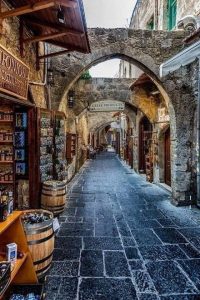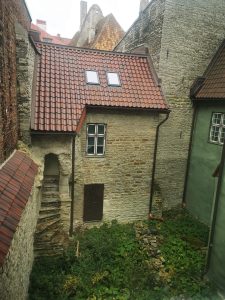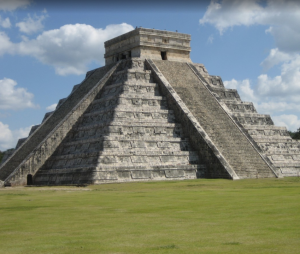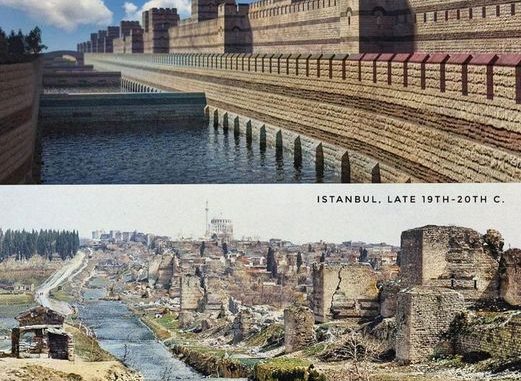
The Imperial Capital: Constantinople Before 1453
Before the year 1453, the city known as Constantinople stood as a bastion of the Byzantine Empire, its name synonymous with unparalleled grandeur and fortifications that were the envy of the medieval world. The imposing walls of Constantinople, which protected the city for over a thousand years, were not just defensive structures but also a symbol of the city’s status as a center of culture, trade, and politics. The magnificent Theodosian Walls, with their towering presence and strategic engineering, encapsulated the might of an empire that bridged the classical and medieval worlds.

Istanbul in Transition: Late 19th to 20th Century
The transformation from Constantinople to Istanbul is a narrative of resilience and change. As the late 19th and 20th centuries unfolded, the city witnessed the ebb and flow of empires, with the vestiges of its ancient walls serving as silent witnesses to a new era. Istanbul, adapting to the tides of modernity, began to shape a new identity, one that embraced the remnants of its past while forging a path into the future.
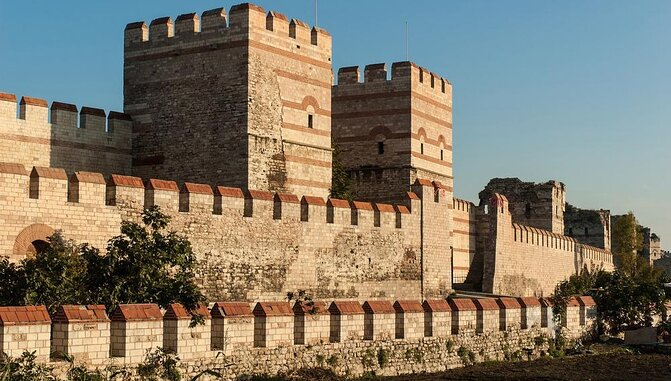
The Confluence of Civilizations
Istanbul’s layered history is a testament to the many civilizations that have called it home. From Byzantines to Ottomans, each left an indelible mark on the city’s physical and cultural landscape. The remnants of the walls in the contemporary image speak to a bygone era, juxtaposed against the bustling life of a modern metropolis. Istanbul’s ability to preserve its historical roots while continuously evolving is what makes it a unique jewel of history and modernity.
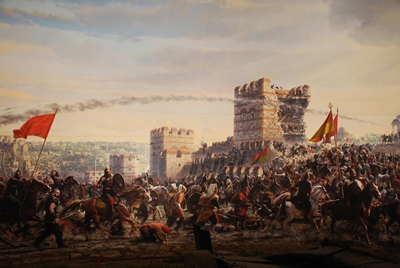
Preservation and Progress
Today, Istanbul stands as a living museum, a city where ancient ruins and modern infrastructure coexist, reflecting the city’s ongoing dialogue between its illustrious past and dynamic present. The challenges of preserving such a rich heritage in the face of urban development and population growth are immense, yet the city strives to maintain the delicate balance between preservation and progress.
A City Reimagined
The transformation captured in the images is striking—a shift from the fortified capital of an ancient empire to a cosmopolitan hub that straddles two continents. As Istanbul continues to reinvent itself, it remains a focal point for historians, architects, and travelers intrigued by its capacity to tell the story of humanity’s shared past and its potential to inspire future generations.
The Eternal City
Istanbul’s story is one of continuity amidst change. It is a city that has reinvented itself time and again, yet always retains its essence—a place where history is not just remembered but lived. As one gazes upon the modern cityscape against the backdrop of its historic ruins, it is clear that Istanbul will continue to captivate imaginations and hold its place as a pivotal crossroads of history and culture for ages to come.
